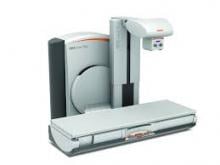The term mesothelioma was coined in 1909, just a few years after the introduction of medical X-ray imaging. The term was developed after thousands of autopsies, numerous discoveries and significant research linked asbestos to a deadly form of cancer. As X-ray technology developed further, the framework for diagnosis and understanding the pathology of mesothelioma was established in 1931.
If you enjoy this content, please share it with a colleague
- Read more about Mesothelioma Imaging and Diagnostics, What to Look For
- Log in or register to post comments






